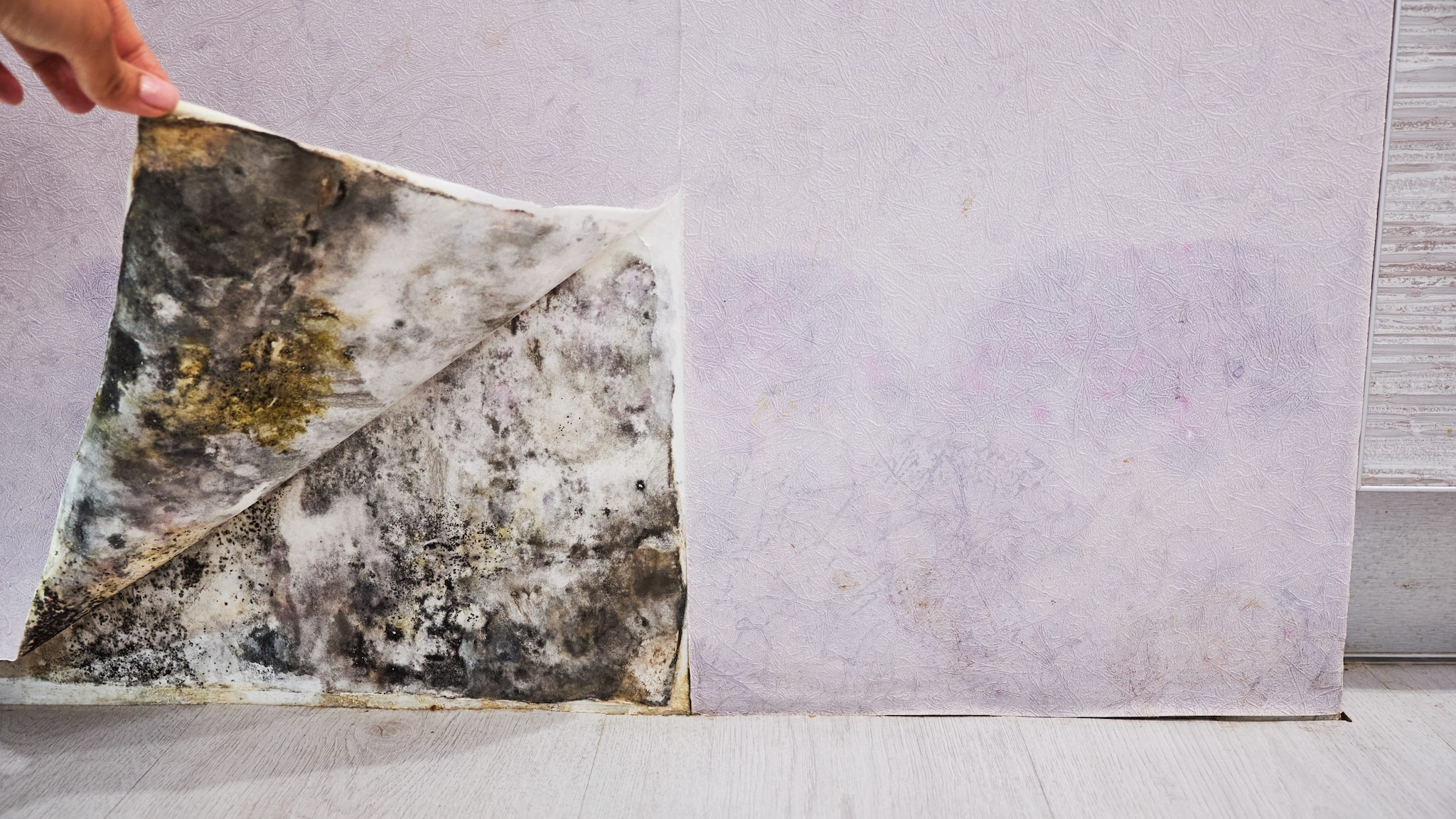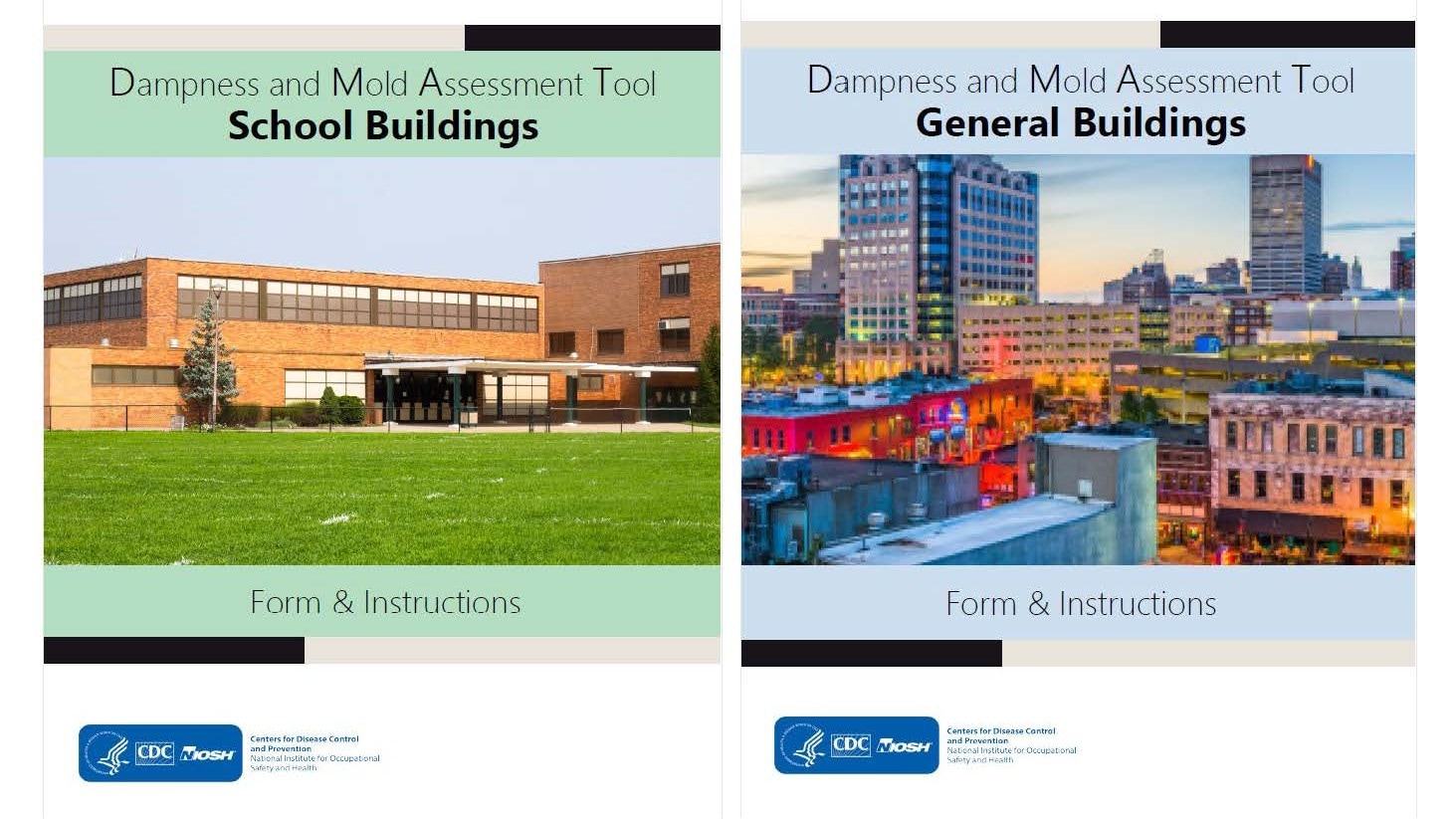Key points
- Indoor dampness and mold result from water leaks in buildings.
- Exposures in damp buildings are complex. They vary from building to building and in different places within a building.
- Dampness and mold are associated with various respiratory and non-respiratory health problems in workers.

Sources
Sources of water incursion are often apparent like leaks in the roof or a broken pipe. They are less obvious when affected materials and water sources are hidden. Wet insulation in a ceiling is an example.
Problems occur when materials in buildings become wet for extended periods of time. High relative humidity can also lead to excessive dampness. Moisture allows indoor mold to grow and multiply on building materials and surfaces. People inside damp buildings may be exposed to:
- Microbes
- Compounds released by microbes
- Structural components of microbes like spores and fungal fragments
Mold can produce substances that may cause or worsen health problems. These substances vary depending on the mold species and environmental conditions. Moisture can also attract cockroaches, rodents, and dust mites. Moisture-damaged building materials can release volatile organic compounds or irritating airborne chemicals.
Resources
Dampness and Mold Assessment Tool
Researchers do not know how much exposure to dampness-related substances it takes to cause health problems. Finding and promptly correcting sources of dampness is more effective at preventing health problems than air samples for indoor mold. NIOSH developed a tool to help assess areas of dampness and prioritize remediation of problem areas in buildings.

NIOSH Alert
Occupants within damp buildings, schools, and other nonindustrial buildings may develop respiratory symptoms and disease.
This Alert:
- Describes respiratory problems that occupants may experience from exposures in damp buildings.
- Presents information on outbreaks of building-related respiratory disease.
- Recommends ways to find, respond to, and prevent building dampness and related respiratory symptoms and disease.
Mold Health Hazard Evaluations
The NIOSH Health Hazard Evaluation (HHE) program is a service that evaluates U.S. workplaces for health hazards. NIOSH has performed many evaluations related to mold concerns in buildings. To learn more about these evaluations, go to the Search HHE Reports page:
- Type "mold" in the search box.
- Click the Search button for a list of mold-related HHE reports.
- Cho SJ, Cox-Ganser JM, Park J-H [2015]. Observational scores of dampness and mold associated with measurements of microbial agents and moisture in three public schools. Indoor Air 26(2):168-178, https://doi.org/10.1111/ina.12191.
- Park J-H and Cox-Ganser JM [2022]. NIOSH dampness and mold assessment tool (DMAT): Documentation and data analysis of dampness and mold-related damage in buildings and its application. Buildings 12(8):1075, https://doi.org/10.3390/buildings12081075.
